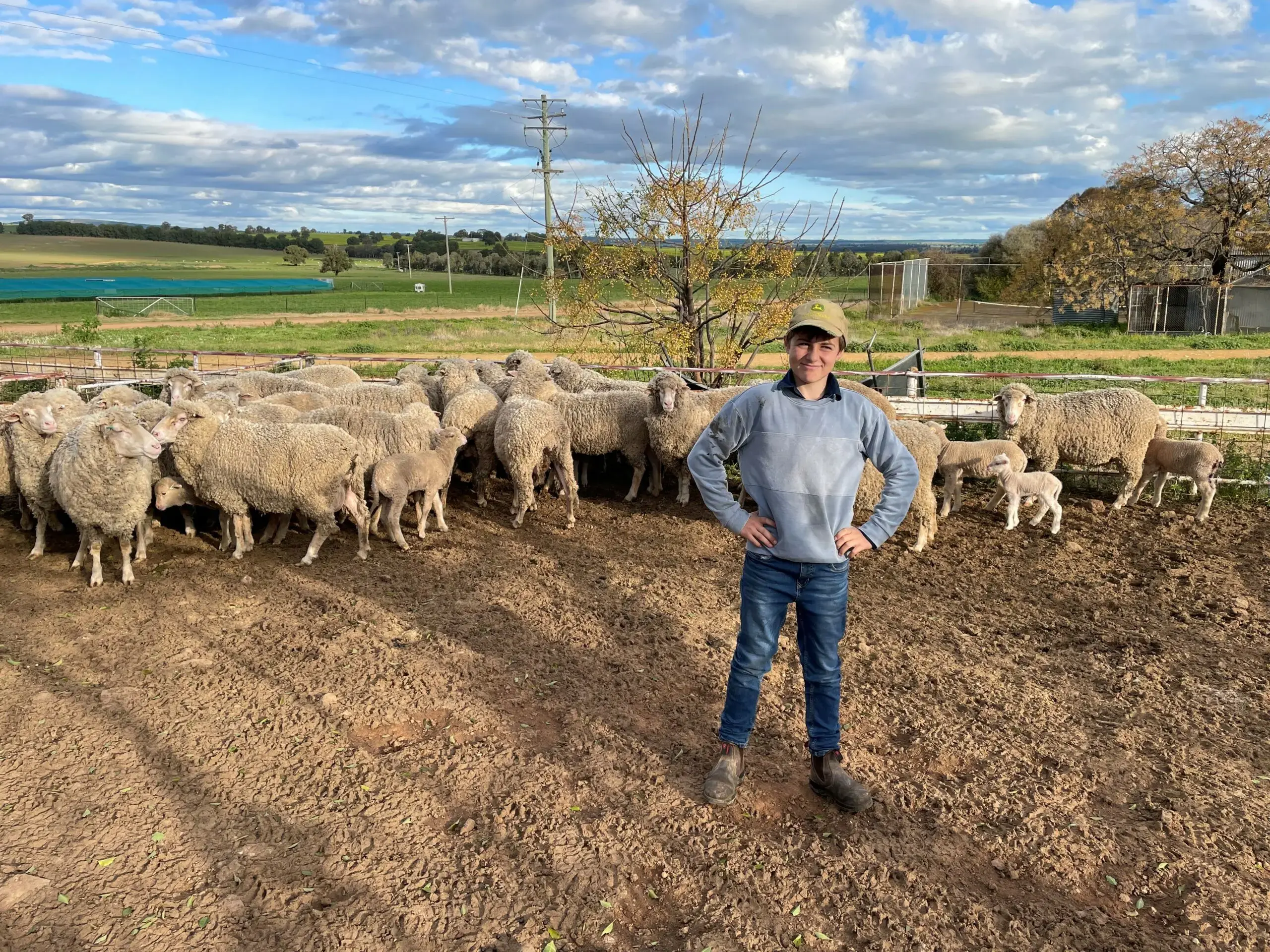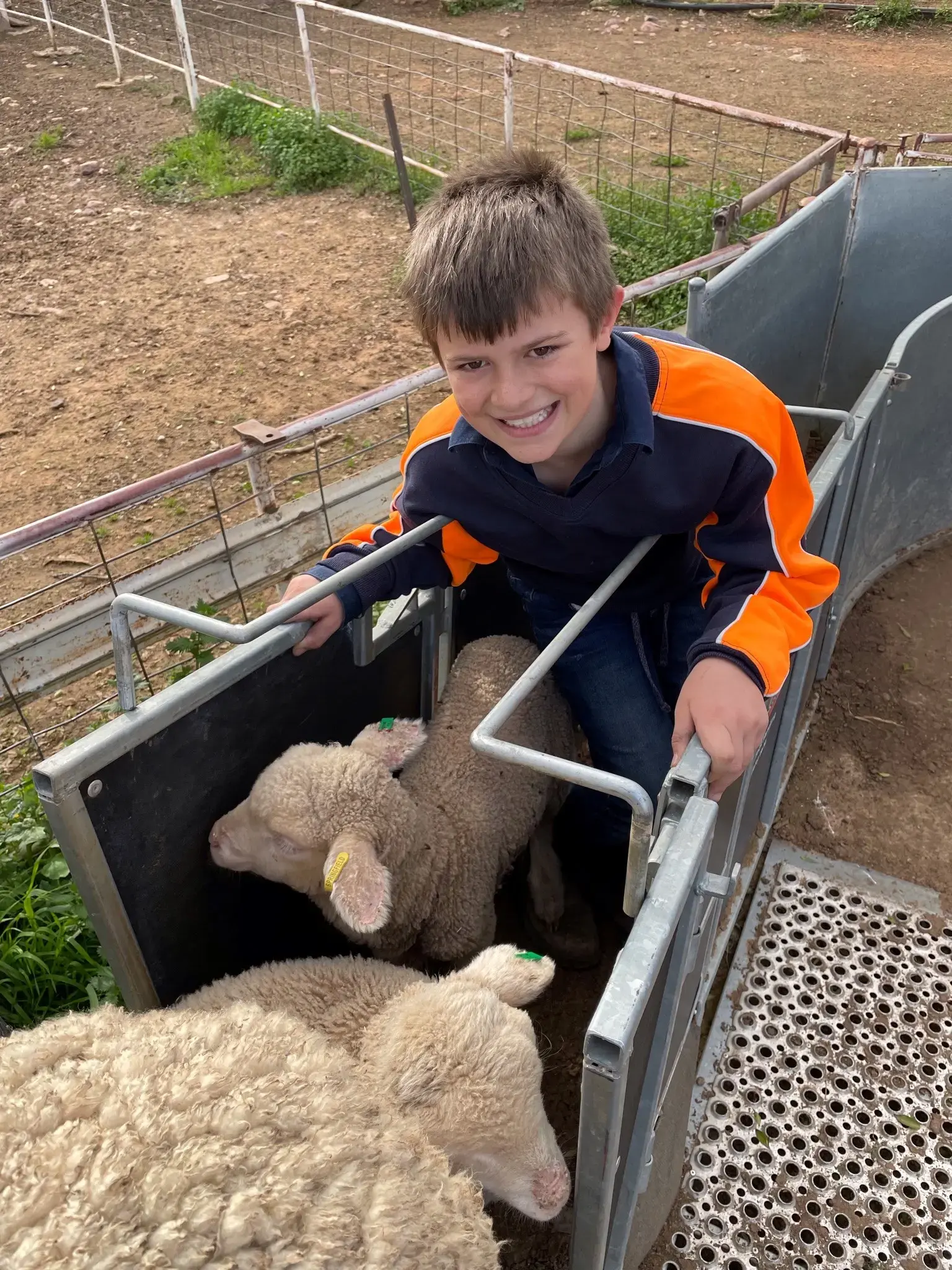Greenethorpe, NSW
Jamie Wright is a cropper on a mission to reduce his farm’s reliance on chemical inputs and improve his soil. Jamie runs Springfield, a mixed farming operation on 5,000 acres near Greenethorpe NSW. They currently run sheep and a cropping enterprise, with a eucalyptus plantation that supplies to the cut flower market.
With a long long family history of innovation and adaptation, Jamie is used to change. In the 1990s they shifted to minimum till and have been evolving this over time. The emergence of herbicide resistance was the trigger for Jamie to take a hard look at chemical use on the property.
“We had herbicide resistant ryegrass which we just could not get rid of, and we knew we had to do things differently” said Jamie.
Spurred by this emerging problem, Jamie became one of the first grain growers on Australia’s east coast to design, manufacture and use chaff carts. Chaff carts provide harvest weed-seed control (HWSC).

Chaff carts are towed behind harvesters and reduce the need for herbicide by collecting weed seeds at harvest, reducing the weed seed bank. The cart dispenses piles of collected chaff and seed in piles evenly spaced across the paddock. Depending on the grower’s situation, chaff heaps have been used to feed stock, bailed and stored on-farm for fodder, used for compost, or burnt to destroy weed seeds.
“You can collect all of the material that comes out of the back of the header, or you can spread the straw and just catch the chaff coming from the sieves” he said.
Jamie’s design builds on a concept which has been successfully employed in Western Australia’s grain belt since the 1980’s. Jamie undertook his own research, visited users of chaff carts and drew on networks such as the Australian Soil Planners group, drawing upon the experience of other producers to develop carts that met his localised requirements. Jamie’s Chaff Cart was trialled for the first time in the 2014 harvest.
In addition to reducing weed seeds, chaff carts also reduce the loss of nutrients from cropping paddocks associated with burning of crop residues, and provide beneficial feed for animals.
Research conducted by Peter Newman as part of a GRDC research project indicates that about 10 to 20 per cent of stubble residue is removed in a chaff cart system, compared with about 50 per cent where windrow burning is used. This means there are significantly fewer nutrients taken out of paddocks where chaff carts are used. The nutrient loss can be reduced even further where sheep are allowed to graze chaff dumps and recycle the nutrients across paddocks in their droppings.
In Jamie’s case, he both grazes his chaff piles and also bales for future use. Since implementing chaff carts he has observed an increase in the resilience of his grazing enterprise through reduced need for purchased feed. He has only had to bring in a single load of feed – in 2018 – since adopting chaff carts.
Jamie has made a range of other improvements in his quest for healthier soil. He has recently begun using a soil drench that includes molasses to activate microbes in the soil. The molasses stimulates bacteria and fungi which increase the breakdown of organic matter, releasing nutrients to the plant roots.
He has also intensified his use of cover crops in the past few seasons. Cover crops are increasingly becoming an important tool to maintain groundcover, control weeds and improve soil health in cropping systems. Jamie has trialled teff with good results and plans to continue to do so where ground cover is low, particularly after legume crops.
Jamie has seen positive soil health and weed management results from his combination of new management practices. He believes these to be due to a combination of improved soil health, reduced weed bank and reduced overall pest pressure across the property.
Jamie reports a significant reduction in reliance on herbicides, fertilisers, pesticides and fungicides. Fertiliser use has reduced by half, with even larger reductions on the small portion of the farm which is ASP (Australian Sustainable Produce) certified. Application of pesticides and fungicides has reduced across the property, and for the ASP certified crop, pesticide applications have dropped by half.
The changes in management did take some time to deliver results. “It took about 2-3 years after the change in practices before results in soil health and weed management could be seen”.
Reassuringly, these results did not compromise the economic viability of the property compared to conventional farming.

“In the end the bottom line is not much different”, says Jamie.
Things are ticking along well for Jamie, however there are always things that can be tweaked. Like in many enterprises Jamie is open to new ideas to build into his farm. “I am always looking for efficiency, as efficiency drives profitability”.
He highlighted how being part of the Australian Soil Planners network means that there is a constant flow of ideas that can be adapted for his property. The growers in the network share a common recognition and understanding that increasing biology, repairing deficiencies, and remediating toxicities in the soils will result in the production of stronger, healthier plants that require fewer inputs including fertilisers and pesticides. This peer support network is a critical part of Jamie’s ongoing journey to discover, trial and roll out improved grazing and cropping practices to improve soil health, reduce inputs and improve the profitability and resilience of his enterprise.





